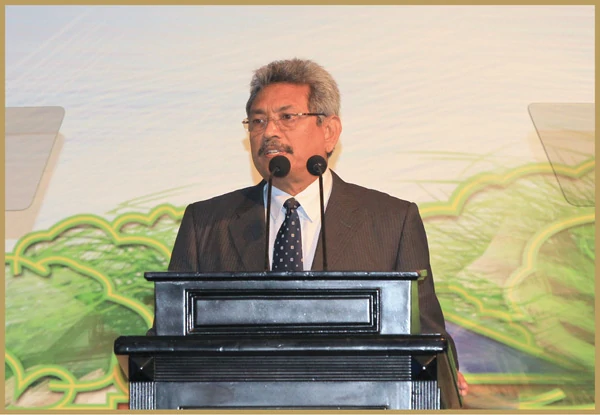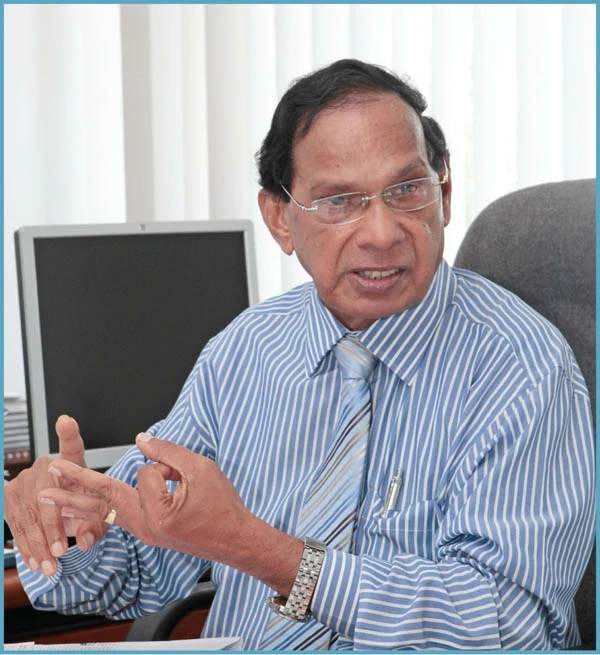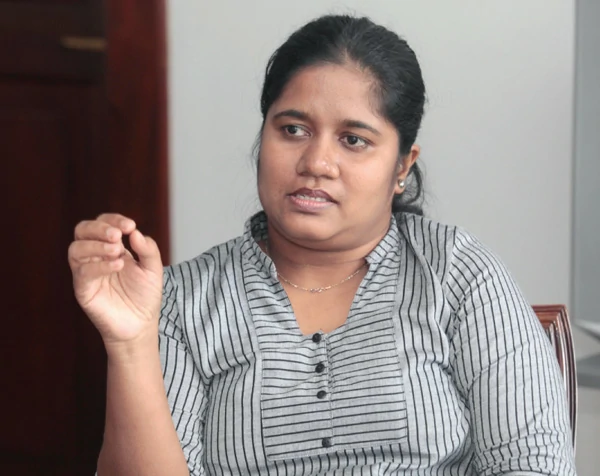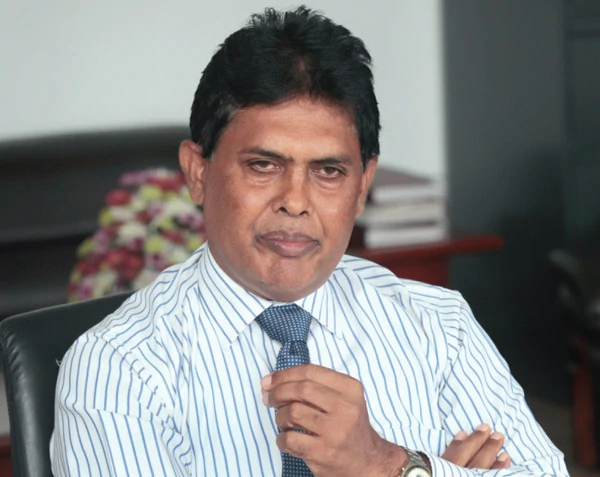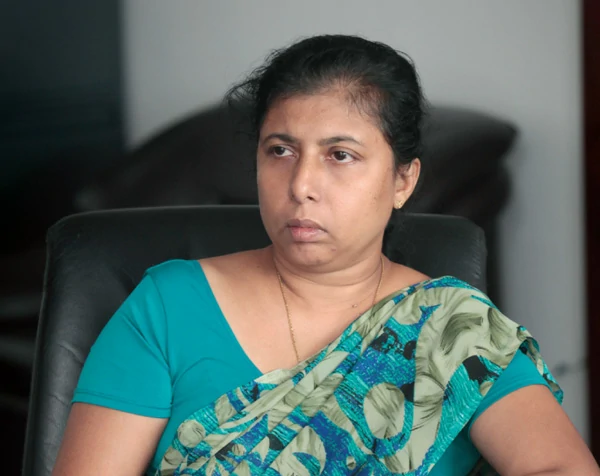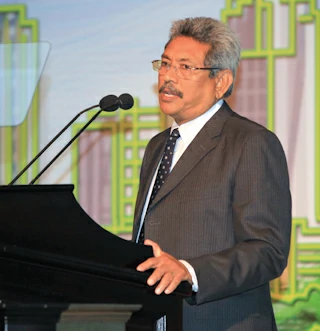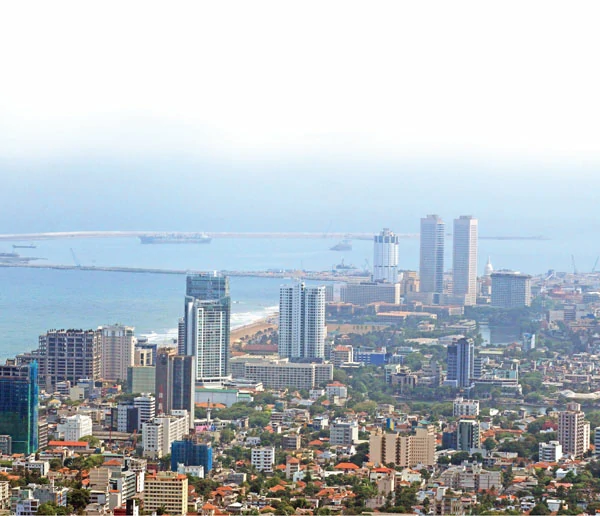
“As a historic multicultural, tropical city bordered by the sea, Colombo has many natural advantages that should be capitalised on. Its historic architecture, greenery and public open spaces must be heightened and its people-friendly nature fostered. It is with such improvements in mind that the Government has launched many initiatives through which it hopes to further develop Colombo” – Gotabaya Rajapaksa, Secretary to the Ministry of Defence and Urban Development at the launch of the Metro Colombo Urban Development Project.
By Kamalika Jayathilaka
Rejuvenating Colombo
Situated on the Western coast of the Island, Colombo is the largest city of Sri Lanka and is a throbbing metropolis that is the commercial hub and administrative capital of the country. Having captured the attention of traders more than 2,000 years ago due to its strategic position the name ‘Colombo’ had been first given to it by the Portuguese in 1505 and the city has since grown to prominence and reflects the trade and culture of a past showcasing some of the historic colonial traces of design and architecture.
Today, Colombo contributes to over 50 percent of the national GDP and has much more room to grow. The economic density of Colombo is only approximately USD 15 million per square kilometre. In comparison to other Asian cities this indicates the kind of growth that Colombo should aim for especially in the current context. Thus, with three decades of war behind it and the country at peace, it is finally possible to realise Colombo’s true potential.
Given this, the Government aims to convert Colombo to be one of the world class cities. Therefore, under the strategic leadership of President Mahinda Rajapaksa and the guidance of Gotabaya Rajapaksa, Secretary to the Ministry of Defence and Urban Development the journey of urban regeneration in Colombo has now begun, intended at greatly enhancing the functionality and unique character of this city.
“In 2005 the UDA had actually prepared a development plan for the Colombo city area, but we couldn’t implement any of the projects due to security threats that prevailed during the last 30 years. However, after our authority was absorbed by the Ministry of Defence and Urban Development, under the guidance of our Secretary Gotabaya Rajapaksa, we have begun implementing our projects effectively and efficiently,” stated Nimal Perera, Chairman of the Urban Development Authority.
Under The Strategic Leadership Of President Mahinda Rajapaksa And The Guidance Of Gotabaya Rajapaksa, Secretary To The Ministry Of Defence And Urban Development, The Journey Of Urban Regeneration In Colombo Has Now Begun
Preserving a colonial heritage
The unique blend of cultures and the collective traditions of the myriad communities of this country is one of the significant features that the Government is keen on emphasising during the arduous process of Colombo’s urban development.
A large number of unique Colonial era buildings are present all around the city, as well as many ancient religious establishments such as temples, kovils, mosques and churches. “Therefore, 
it is vital that this colonial heritage in the form of architecture is preserved for the future,” stated the Chairman of the UDA.
The area around Fort is the oldest part of the city and has several historic landmarks and buildings. However, due to its organic growth throughout the past years, the full potential of this area has not been realised. As a result, the Government is now in the process of placing several measures to develop this historic part of the city.
Instead of being a restricted high security zone, the Fort will be opened up for commercial establishments, restaurants, museums and other public facilities. Therefore, efforts have already begun to make this a shaded, ‘pedestrian only’ area that will restore the original beauty of the historic city centre.
“The Fort area is covered completely with buildings from the Dutch era. There are altogether about 40 old buildings in this area. Our idea is to renovate all these old buildings within the next five to six years, and we are also planning to renovate these buildings to be just the way they were when we inherited them as a part of our heritage,” stated Nimal Perera.
The Fort Area Is Covered Completely With Buildings From The Dutch Area. There Are Altogether About 40 Old Buildings In This Area. Our Idea Is To Renovate All These Old Buildings Within The Next Five To Six Years”
The Dutch Hospital
The recent restoration and reopening of the Dutch Hospital 
is a good example of developing the city while preserving its colonial heritage. “The hospital was rehabilitated while retaining the spirit of the original architecture, and has been transformed into a public open space with high-end shopping and restaurant facilities,” explained Nimal Perera.
Considered to be the oldest building in the Colombo Fort area dating back to the Dutch colonial era and constructed as a hospital by the 
Dutch around 1681, the Colombo 
Dutch Hospital has been used for different purposes. It had housed the Colombo Fort Police Station from 
the early 1980’s to the 1990’s prior to which it accommodated the Colombo Apothecaries. The building had also suffered heavy damage in the LTTE attack on the Central Bank in 1996.
“Most of these buildings were categorised as unusable and were 
to be removed. But we took on the 
challenge of rehabilitating them while making sure not to damage their original architecture and design. 
When we started working on the Dutch Hospital, some even laughed at us disbelieving our ability to transform the building to what it is today,” 
detailed Dilum Adhikari, Architect, Fort Area Development Project - Urban Development Authority, explaining the strenuous task that was at hand for the parties involved in carrying out this renovation project.
As the first step of the rehabilitation project, the area opposite the World Trade Centre had been landscaped, while all surrounding buildings that were constructed after the Dutch period had been demolished. “We really must thank the Fourth Engineering Services, a regiment of the Sri Lanka Army for their tremendous support in steering this project towards a success,” added the Architect.
Having been completed within eight months, the Dutch Hospital today is a shopping precinct that attracts not only foreign but local visitors by thousands daily. “Not so long ago Colombo used to be a dim city, going to sleep by about ten in the night. 
Go to Geneva or to Stockholm or go to Singapore, these cities go to sleep at four in the morning. Pubs and restaurants are open all night and the cities are bustling with activity. We plan to have that sort of Colombo. We want people to enjoy; places like Dutch Hospital are a part of creating this active, bustling city,” stated the Chairman of the UDA.
Most Of These Buildings Were Categorised As Unusable And Were To Be Removed. But We Took On The Challenge Of Rehabilitating Them While Making Sure Not To Damage Their Original Architecture And Design”
Colombo Racecourse
The old Colombo Racecourse, whose buildings were originally proposed to be demolished, has undergone a similar form of renovation. While the ground has been converted into an international standard rugby ground, its pavilions have been conserved and converted to suit present day activities, with the area with road frontage being transformed into an up-market shopping complex.
The Racecourse building had been abandoned since the 1970‘s and had been in a dilapidated state before it was earmarked for renovation with an estimated cost of Rs 400 million. 
”This was one of the buildings that were neglected and awaited demolition. When we first approached the building we were advised by the Central Engineering Consultancy Bureau not to go into renovation since its iron structure was no longer stable. However, we were determined and went ahead with the restoration work, the Defence Secretary was certain that this could be fixed,” explained Architect Dilum Adhikari.
However challenging, the parties involved with the support of engineering consultants and the National Building Research Organisation for technical knowhow had initiated rehabilitation of the old Colombo Racecourse which has reached near completion.
Old Marketing Department Building and similar projects
Many more timeworn buildings with various architectural features around Fort as well as other areas have been renovated and re-utilised for commercial purposes. In addition, parallel to this the relocation of wholesale markets and other economic infrastructure to custom designed locations outside the city limits is taking place in order to further rationalise space utilisation in the city.
The initiative to develop the Colombo city while preserving its colonial heritage also includes renovation work of the Old Marketing Department Building at Colombo Fort and the refurbishment of the Central Super Market, Pettah (former fish market) into a Gold Centre or a hub for gold jewellery merchants. The Manning Market, which is the wholesale market for vegetables, is also to be moved to Peliyagoda, where the St John’s Fish Market is located. The existing market will be re-developed, the bus stand complex adjacent to this is to be expanded and pavement hawkers in the area are to be given space in a commercial complex, which is also to be built in the same area.
“Some of these plans are already underway. We have moved the fish market to Peliyagoda to occupy a much larger building with sufficient space. We are now planning on relocating all the jewellers on Sea Street to the Central Supermarket by converting it to a ‘Gold Centre’. Having held discussions with the jewellers we have agreed to renovate the building according to their unique requirements so that even for the customer there would be adequate parking facilities. We hope that this would be ready by June 2013,” explained Nimal Perera, the Chairman of the UDA.
The construction work of all these projects are entrusted to the Engineering Services Divisions of the Sri Lanka Army, Navy and Air Force so that the cost of construction can be kept at a minimum.
This Housing Project Will Be Much Larger Than The Mahaweli Project. We Are Very Much Committed To This Project And Are Intent On Completing This And Making It A Very Successful Project”
Creating a livable City Housing and uplifting the community
As a major component of 
the Colombo city development 
plan approximately 68,000 families, identified as shanty or slum dwellers within the city, would be relocated and resettled in high-rise community housing units that are to be developed for them within the city. This is expected to be completed within the next two years. Uplifting the quality of life of this segment of the population has also become one of the Government’s major concerns.
“11 plots of land for 11 storey complexes have already been identified in Colombo and discussions with a number of interested companies have already commenced. Even though such a programme would be costly, with each unit or apartment costing approximately Rs 2.1 million the Government intends on raising the required funding through allocating the freed land for development activities,” elaborated Nimal Perera, the Chairman of the UDA.
For instance, TATA India has already agreed to build 436 houses in a high rise building along with 90 commercial shops in an effort to relocate the shanty dwellers. Until construction is complete, TATA has also agreed to pay Rs 10,000 to 15,000 for them to find alternative accommodation. In addition, TATA has also agreed to build two 60-floor towers, with service apartments, hotels and other components to give out on rent. This will be a USD 463 million investment.
“We intend to relocate and resettle 10,000 families within the next three years. When it comes to mid next year, most of the work will be completed.
We also have a target to commence on yet another 10,000 houses this year. We have already secured the necessary land and have called on the contractors. We hope to achieve this year’s target by November 31, 2012,” explained Brig Samantha Jayasundara, Additional Director General of the Urban Development Authority explaining the UDA’s aspirations for housing projects in the city of Colombo.
Another important aspect is that social and cultural issues are also taken into consideration when planning these housing projects. “We undertake discussions with the beneficiaries before undertaking the relocation process, and we also take their requirements into consideration. 
Their consent is very important to us,” stated Thushani De Alwis, Deputy Director – Planning, Western Province Division of the UDA.
“Under this project we will not be providing a small number of houses. This housing project will be much larger than the Mahaweli Project. We are very much committed to this project and are intent on completing this and making it a very successful project,” said the Additional Director General.
At the same time, unauthorised structures, which block the drainage systems are also being removed. 
The Sri Lanka Navy, the Sri Lanka 
Land Reclamation Board and the Development Corporation have long been engaged in dredging and rehabilitating the canal system in 
the city.
Solid waste management is another crucial issue that is being successfully handled. With the creation of the Environmental Police and the support of various other agencies Colombo is well on its way in becoming a clean city.
An Administrative hub
Parallel to the community-housing programme, relocation of government buildings to Sri Jayawardenapura has already commenced. Relocating these offices to the administrative capital is considered essential in rationalising land use in Colombo. As a first step towards expediting relocation, 
the offices of the Defence Ministry, Chief of Defence Staff and the headquarters of the armed services are being moved out of Colombo. The land released from the relocation is being allotted for further development activities. This will not only fund the relocation process but will also generate vital economic activity within the city.
The Shangri La Group has already begun constructing a luxury holiday resort and residential complex on a ten acre plot of land that was allocated to the Sri Lanka Army at Galle Face. A Chinese company has undertaken to establish a skyline hotel on an adjacent block of land. These agreements have already generated a large incursion of funds, which has been redirected towards the combined Defence Headquarters Complex presently being constructed in Battaramulla.
“Likewise, we have found investors for certain barren lands. There are also many other areas that we looked into regarding which we identified and invited investors, and promoted them to start their projects so that the regeneration will take place. Therefore, we have sustainable development underway,” added the Chairman of the UDA.
Another project that was greatly expedited is the second phase of the Sethsiripaya complex, where the 14 story ‘Sethsiripaya Two’ was recently declared open. “We will commence work on the 60 storey ‘Sethsiripaya Three’ within the next month. The main objective of the President and the Secretary of Defence and Urban Development is to shift administrative offices into this area and develop Colombo mainly as a commercial hub,” elaborated Brig Jayasundara.
We Undertake Discussions With The Beneficiaries Before Undertaking The Relocation Process, And We Also Take Their Requirements Into Consideration. Their Consent Is Very Important To Us”
Building a Garden City Creating public space
While urban regeneration is the common theme of all afore mentioned projects, the Government at the same time intends to further develop Colombo by creating new city space. As such, efforts have been made to develop the Independence Square area and other such segments of the city as pedestrian friendly, scenic localities with space for the people. This was also conducted under the intention of uplifting the character of the city as a green, clean and urban environment.
Established to commemorate 
Sri Lanka’s independence from British rule in 1948, the square had become under-utilised for many years. With the removal of walls and fences that obstructed parts of it, and the development of walkways and bicycle paths around it, Independence Square has now been transformed into a high quality public space that the residents of Colombo very frequently use.
“Today, Independence square is used by many. There is space for everyone, from a child to the elderly. There is adequate space for jogging, walking; and some even go there to study,” explained Brig Jayasundara.
The Diyawanna Oya has been dredged and the road leading to the Parliament has been lined with 
pavements. Tracks have been laid out for walking or jogging while the area has been beautifully landscaped with benches and adequate lighting 
provided for the evening. The playground near the Parliament is also being developed with a track running round.
Under the Metro Colombo Development Project, funded by the World Bank, the development of the Beira Lake Linear Park and the Beddegana Park, as well as various waterfronts in several parts of the metro Colombo area will be undertaken. Through this many new public open spaces will be created in the near future.
The Metro Colombo Urban Development Project (MCUDP)
“The Metro Colombo Urban Development Project aims to solve several of the city’s longstanding infrastructure constraints. I am confident that its successful implementation, together with the other initiatives of the Government to develop Colombo, will help transform this city into a truly world class one” – Gotabaya Rajapaksa, Secretary of the Ministry of Defence and Urban Development.
The Metro Colombo Urban Development Project Aims To Solve Several Of The City’s Longstanding Infrastructure Constraints…”
A unique initiative
Metro Colombo Urban Development Project is designed for flood and drainage management in the Colombo city and aims at bringing about qualitative and visible changes in the metro Colombo region, which is considered as the international gateway to Sri Lanka. The project which was recently launched under the patronage of Gotabaya Rajapaksa, Secretary to the Ministry of Defence and Urban Development is now underway, and strives for completion within the next five years turning Colombo into ‘a truly world class city’.
“Conceptualising this project began a couple of years ago when the Government requested the support of the World Bank. It was clear to the World Bank from work being done in other countries, that the system of cities should be improved so that a country can reach a middle income status and Colombo being the metropolitan region of the Island, plays a critical role in the economy of the country and has to be the starting point of such development,” explained Rosanna Nitti, Senior Urban Specialist of the World Bank who has been very much involved in this project.
There are two main components under the proposed MCUDP, which will be implemented collaboratively by the Sri Lanka Land Reclamation and Development Corporation (SLLRDC), Urban Development Authority (UDA), Colombo Municipal Council (CMC), 
Sri Jayawardenapura-Kotte Municipal Council, Dehiwala-Mount Lavinia Municipal Council, and Kolonnawa Urban Council under the directions of the Project Management Unit located in the Ministry of Defence and Urban Development.
“The project cost is USD 223 million. This is one of the largest amounts that the country has received from the World Bank. This will be received as a very concessional, soft loan to be repaid in 20 years under a low interest rate with a five year grace period. Therefore, there is no heavy burden on the Government of Sri Lanka. It is a large sum of money but we have so much of work to do,” elaborated Rohan Seneviratne, Project Director and Additional Secretary of the Ministry of Defence and Urban Development.
Component 1: Flood and Drainage Management
The first component – the flood and drainage management component – of the MCUDP addresses a range of flood and drainage problems that the metro Colombo region suffers from as a result of its rapid, organic growth that has been persistent through the past 
several decades. This component 
comprises of four sub-components, which are improvements to main canals and lakes, improvements to secondary canals, improvements and rehabilitation to storm water drainage, 
road improvements and other social and physical infrastructure.
“The project does not stop at providing infrastructure, we have also considered aspects such as environmental protection and the conservation of wetlands and we have also considered longterm solid waste management, water quality and the quality of life along the canals. Therefore, this is a very integrated effort involving many dimensions,” elaborated Rosanna Nitti.
Under this element, Colombo’s drainage infrastructure, including 
its micro drainage channels, primary and secondary canals and lakes are to be rehabilitated. The work to be undertaken on the Beira Lake is a significant characteristic of this project, as the lake had been neglected for decades.
“Beira Lake restoration is already underway, and construction work on the Lotus Tower has also begun nearby to this. Likewise, 800 people living around the Beira Lake will be given better houses and the existing lands will be released. The water quality of the lake will also be improved. Parallel to all these developments, we are also planning on creating an international shopping lane of two kilometres from Gamini Hall to Lake House, at D R Wijewardena Mawatha,” added Rohan Seneviratne speaking of the first component of the MCUDP.
Once developed, the Beira Lake Linear Park will play a major role in the city’s flood management system, whilst also being a place for a variety of recreational and economic activities.
“We have now controlled flooding up to a certain extent. We first cleaned the canals, because the canals were in a very bad state for many years. After identifying this obstacle, we also obtained the support of the Navy. Today, about 250 personnel of the Sri Lanka Navy are occupied in maintaining the canals in Colombo,” added the Project Director.
Similar to the Beira Lake Linear Park, a bio diversity wetland park will be developed in Baddegana as a part of this project. “One of the major causes for flooding is land filling. During the last ten years 30 percent of our land was lost due to illegal filling. With this we also lost the storage capacity. The idea of creating the Baddagana Park is to educate the people about wetland management and why we should protect wetlands,” added Rohan Senevirante.
…Cities Should Be Improved So That A Country Can Reach A Middle Income Status, And Colombo Being The Metropolitan Region Of The Island, Plays A Critical Role In The Economy Of The Country And Has To Be The Starting Point Of Such Development”
Component 2: Urban Development and Infrastructure Rehabilitation for Metro Colombo Local Authorities and Implementation Support
The second component of the project is expected to assist and reinforce the local authorities in the metro Colombo region to rehabilitate and manage the drainage and public infrastructure in their areas.
“There have been other programmes that have focussed on flood reduction and urban development in general 
in the past but what you see consistently is that once the project is over there is not much capacity for maintenance. Often the local 
authorities are not involved in the process the infrastructure is just handed over hoping that they will maintain and operate. But the capacity of these agencies to do so is often not considered. This is why in this project there is a component where we look at mostly the local authorities,” stated Rosanna Nitti.
Under this component, selected roads in various parts of the metro Colombo region will also be enhanced. Pedestrian facilities and public amenities in certain key locations are to be upgraded, and the overall quality of public walkways is to be improved. A key feature under this component however, is capacity building within the local authorities to enhance the maintenance of the improved infrastructure and public facilities.
“The Town Hall Square, Viharamahadevi Park and the surrounding roads are to be improved under this component. Then we are planning on a Water Front Recreation Park at Crow Island and also there is the proposed Marine Drive Promenade. We also plan to create safe, convenient and uninterrupted pedestrian links between crowded railway stations and two main intersections at Bambalapitiya and Colpetty along the Galle Road,” added Rohan Seneviratne.
The Success Behind The MCUDP And The General Development Of The City Of Colombo Is Actually The Leadership And Guidance Provided By Mr Gotabaya Rajapaksa, Secretary Of Defence And Urban Development”
Component 3: Implementation Support and Environmental and Social Safeguards
The third component of the project seeks to support the overall implementation of the project, which includes monitoring and evaluation, compliance with environmental and social safeguards and appropriate reporting. On the other hand, it will also help reinforce the capacity of the agencies involved in the project including the Sri Lanka Land Reclamation and Development Cooperation and the UDA for sustaining and replicating the MCUDP initiatives.
“The local authorities have been pretty active and have been a part of this project. We are also working with them in strengthening their capacities for asset management. The hardware will be provided along with the capacity to not only deliver the investment but also operate implementing overtime,” stated Rosanna Nitti.
The capacity enhancements and improvements in monitoring and coordination that will be made possible through this component will not only help ensure the project’s success, but will also benefit the various authorities involved in the longer term.
“Planning itself is not enough. Planning is only the first pillar; the second pillar is the marketing and financing and the third is the operational maintenance, because at the end of the day, the councils will have to do the operation and maintenance. If you don’t have all these pillars and the proper policies to address it all, it is a problem,” added Rohan Senevirante, the Project Director.
In terms of the aspect of environment, efforts will also be made in making Colombo a ‘greener city’ the Colombo Green Growth Programme is another interesting project being carried out in parallel to the MCUDP, which is being funded through a grant from the World Bank.
“The MCUDP has many spillovers, as it will be linked to the Colombo Green Growth Programme where Colombo is going to be the second city in the world apart from Rio de Janeiro to adopt this approach where you have a city-wide approach to carbon reduction,” explained Rosanna Nitti.
Under this programme, steps will be taken to protect the marshy areas of the metro Colombo region, enhance its biodiversity parks, reduce greenhouse gas emissions, and generally upgrade the eco-friendly nature of the city.
Beyond Colombo
“The success behind the MCUDP and the general development of the city of Colombo is actually the leadership and guidance provided by Mr Gotabaya Rajapaksa, Secretary of Defence and Urban Development. He delegates the authority very strategically while placing his trust on us to get the work done, so that we can make decisions very easily,” stated Rohan Seneviratne, Project Director of the MCUDP.
Apart from the development work that is well underway in the metro Colombo region, the Government also has urban development plans for the rest of Sri Lanka. Several projects have already been launched by the Urban Development Authority to develop cities and towns in every district of the country.
“Sri Lanka is a small country with a network of cities, which are easily linked with each other so that they can strive to develop on the comparative strength of each rather than compete with each other and create a system that can compete internationally. Even in such a system, Colombo will continue to play a critical role of spearheading the economic development of the entire country,” stated Rosanna Nitti.
